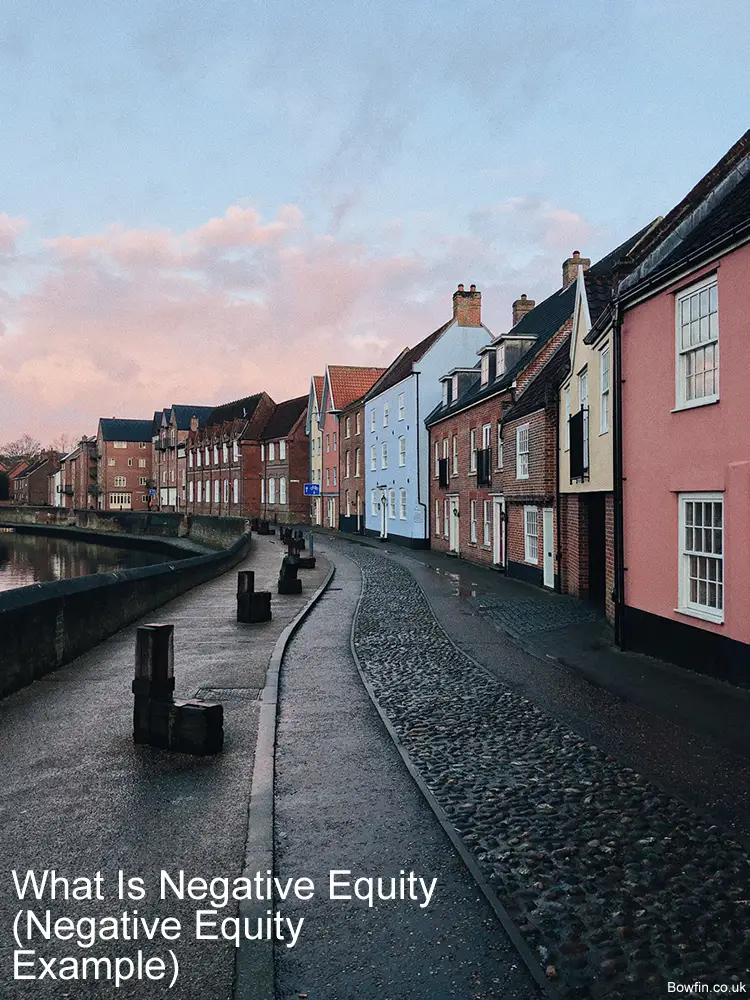
What does it mean if you own more on your mortgage than your home is worth?
Negative equity was more common after the 2008 property crash. But it is still possible to have a house in negative equity. What is negative equity and what does it mean?
What Is Negative Equity? Negative equity means that the market value of your home is less than the amount left on your mortgage that’s secured on it. In other words if you sell you house when it’s in negative equity, the proceeds from the sale won’t be enough to pay off your mortgage and you’ll still owe money to your lender after the sale.
What is the meaning of negative equity?
Negative equity means that the market value of your home falls below the outstanding amount of your mortgage that’s secured on it. In other words, if you were to sell your home, the money you receive from the sale won’t be enough to completely repay your mortgage.
This scenario is usually caused by falling property prices. But it can also be caused by borrowing too much at the outset, as show below in an example.
Negative equity example
In a negative equity example, let’s say you bought your home for £150,000. And let’s say your purchased this house using a mortgage of £120,000. In this example, and at the time of purchase, you would have a positive equity in your home of £30,000.
But now let’s say your property’s market value has fallen to £110,000. In this case your positive equity has changed. In this example you would be in negative equity to the tune of £10,000.
Borrowing using a mortgage which is greater than the value of the house
Another example of how negative equity can happen is where a mortgage company has lent more than the home is worth at the outset.
There were mortgages available in the past that were up to 125% of the market value of the house.
In the above example, where you’re buying a home worth £150,000, the loan in this case would be £187,500 (i.e. 1.25 x £150,000).
This means that as soon as you move into the property in this example, you are already in negative equity. In this example, the negative equity would be £37,500.
What about negative equity and Help to Buy
Under the Government Help to Buy equity loan scheme, the government lends you 20% of the purchase price of the property. This is 40% in London.
The government lends your the 20% or 40% in exchange for a share of the property. With the Help to Buy scheme, the first five years of the loan are interest-free.
Before you can use the Help to Buy scheme and in order to buy your home, you need to put down a 5% deposit. If you combine your 5% deposit outside of London with the 20% Help to Buy ‘deposit’, this equates to a total 25% deposit of the buying price.
You then have to take out a mortgage for the remaining 75% of the property’s value. For those buying in London, the combined deposit of your 5% and the Governments 40% makes an overall deposit of 45%. This leaves 55% to be raised by mortgage for those buying in London.
Small deposits can catch you out so you end up owing more than your property is worth
Whenever you buy using a small deposit, which in the case of Help to Buy is just 5%, even with a relatively modest fall in house prices this could quickly erode the small amount of equity you hold.
A 5% fall in house prices is not uncommon, and currently as I write this article, house prices in London are falling.
Help to Buy is slightly different
However, if your home falls into negative equity with a Help to Buy loan, it could be argued that you are slightly better off than with a conventional 95% mortgage.
Help to Buy example
The difference with Help to Buy negative equity vs a conventional mortgage, the Government owns a percentage share of your property, rather than a set monetary amount.
For example, if your property value drops from £150,000 to £125,000, where the original Help to Buy percentage outside of London (i.e. 20%) began at £30,000. With the fall in the value of the house, the Help to Buy percentage has dropped to £25,000 instead.
In this example, that’s a 16.7% fall in value of the house.
With this example, you would originally have borrowed 75% of the house value. That means your mortgage would have been £112,500. Add to this the Help to Buy loan of £30,000 (i.e. 20% of £150,000), making a total loan of £142,500.
Assuming no significant repayment of the mortgage, now the total borrowing is made up of the original mortgage of £112,500, plus the revised Help to Buy loan of £25,000. This makes a total amount owed of £137,500. That means your negative equity on a house that’s worth £125,000 is £12,500.
I hope you’ve enjoyed this article on the meaning of negative equity
If you’ve enjoyed this article on what is negative equity please share it on your favourite social media site.
Also, if you have any questions, please feel free to comment below too. Alternatively, if you need more help, please feel free to contact us on our contact us page here. Or join the discussion and ask your question in the property forum.




